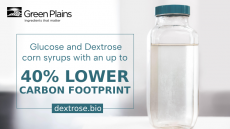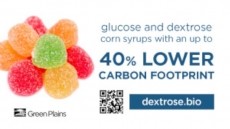Usual suspects: Confectionery may be next victim of national sugar taxes

Britain last week announced plans for a tax on sugar-sweetened drinks from April 2018 that equates to a hike of around 8p ($0.12) on a standard 330 ml can of soft drink.
Such a decision from a country that still carries influence in 52 Commonwealth of Nations member states could create a ripple effect, promoting other nations or even US states to ponder sugar taxes.
The Food & Drink Federation - which represents UK manufacturers - says regulators may be tempted to expand the tax to foods.
The UK soft drink industry argues it had been singled-out and points to other foods that contain almost as much sugar as its products. Confectionery is a culprit.
While a can of coke contains 39 g of sugar, a Mars bar has 30.5 g and a single-serve Cadbury Dairy Milk has 25.5 g. Both these chocolates would fall within the higher band of the UK’s sugar tax if they were soft drinks.
How does UK sugar tax work?
The UK’s soft drink tax has two bands: One for total sugar content above 5 g per 100 ml; and a second band for drinks with more than 8 g per 100 ml. The levy will be around 18p ($0.26) or 24p ($0.34) per litre unit, for each band respectively. For a standard 330 ml sized can, this equates to 6p ($0.09) or 8p ($0.12).
‘Moderation’ advocacy may wear thin
Advocating for free choice and moderation alone may not wash.
Consumers may already be aware candy is a treat to be enjoyed in moderation. They know well that confectionery often contains sugar, in comparison to products like ketchup where sugar is unexpectedly present. But our industry can’t escape that it is one of the biggest contributors to added sugars in the global diet.
A 2015 report by the US Department of Agriculture (USDA) said sweets & snacks were a “major contributor” to added sugars, accounting for 31% of the ingredient in the American diet - behind only beverages (47% of added sugar intake). The next biggest contributor was grains (8%).
The UK’s National Diet and Nutrition Survey similarly found chocolate confectionery accounted for 8%, and sugar confectionery 6%, of average daily non-milk extrinsic sugars (NMES) among children aged 11-18. Only fruit juice (10%) and non-low calorie soft drinks (29%) accounted for more.
Confectionery and sugar taxes
Sugar has been tied to childhood obesity, type II diabetes and tooth decay. These factors prompted the World Health Organization (WHO) and US to tighten guidelines on added/free sugars.
Many single-serve confectionery items consumed alone near or surpass WHO sugar recommendations.
WHO says free sugar should account for no more than 10% of calories in the daily diet and adds there would be additional health benefits if the threshold were 5%. The 5% level equates to 25 g a day.
A Hershey milk chocolate bar and a single-serve Twix each contain 24 g, while a bag of Skittles has 42 g.
EU confectionery association Caobisco says WHO’s 5% recommendation requires further scientific substantiation. But even if added sugar should account for no more than 10% of calories in the daily diet – as the US dietary guidelines now stipulate – all aforementioned single-serve confectionery products account for over half of a person’s recommended daily sugar intake.
Downsizing, reformulating & portion control

At the US National Confectioners Association (NCA) State of the Industry conference 2013, Debra Sandler, then president of Mars Chocolate North America, urged the industry to step up on obesity before it was forced by legislators.
The industry, to its credit, has acted.
Since 2009, the number three global confectioner Nestlé has been renovating its confectionery products aimed at children to contain under 10.6 g of sugar per serving or below 12.5 g per serving for confectionery aimed at older consumers.
But its top selling confection, the four-fingered KitKat, still contains 23.8 g.
Mondelēz announced its Call for Well-being initiative in 2014. It pledged to focus on portion control by increasing individually wrapped options of 200 calories or less by 25% by 2020. But it set no max limit for sugar in single-serve products.
The industry is primarily approaching sugar reduction through downsizing products, while portion-controlled packaging seems the secondary option.
Reformulation is still a challenge as alternative sweeteners are often costlier than sugar and don’t perform the same function. Companies also risk upsetting sales by changing the taste of an established brand.
Stevia and innovation gap
Stevia was touted as the panacea at the 2012 International Sweets and Biscuits Fair (ISM) soon after the high-intensity sweetener won EU novel foods approval.
But stevia chocolate firm Cavalier has said the stevia it uses must be combined with a mix of FOS (Fructo-Oligosaccharides), Inulin and Dextrins – making the final chocolate product three times more expensive than one produced with sugar.
Is this a cost the industry has to swallow to address its public health responsibilities? Perhaps further innovation is needed.
Mounting pressure
- A 2013 report from Credit Suisse, which surveyed doctors, said a sugar tax was the “best option” to limit escalating health problems such as type II diabetes.
- A UN report published this year recommended effective taxation on sugar-sweetened beverages and curbing the marketing of unhealthy foods to reduce intakes to help tackle childhood obesity.
- Candy was initially included in proposed state legislation to tax sugared products in Connecticut, but it later proceeded only with soft drinks.
- Last year, a Massachusetts bill proposed 6.25% sales tax on candy and soda.
- Mexico, France and Hungary have adopted sugar taxes in the past four years.


















